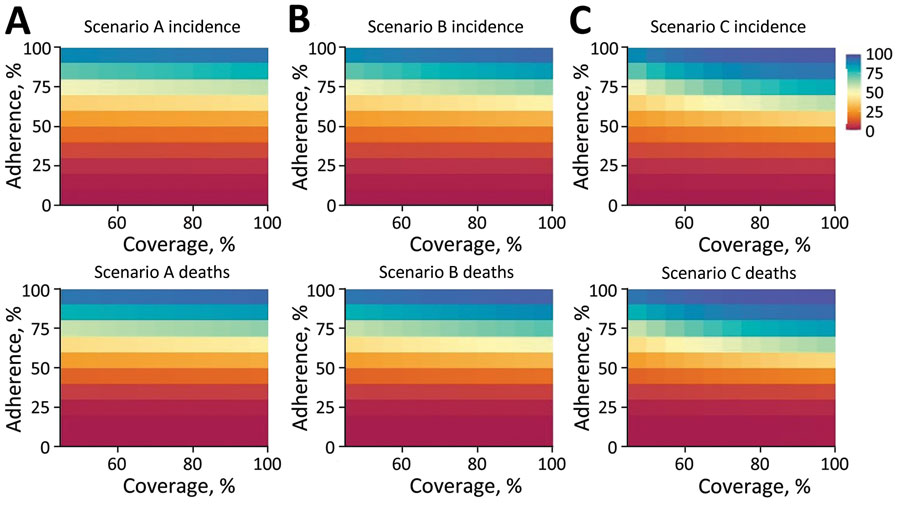Volume 29, Number 9—September 2023
Synopsis
Participatory Mathematical Modeling Approach for Policymaking during the First Year of the COVID-19 Crisis, Jordan
Figure 3

Figure 3. Model-predicted heat map showing percentage reduction in COVID-19 incidence (top row) and deaths (bottom row) in a COVID-19 modeling study in Jordan under 3 different scenarios (A, B, and C), relative to the baseline scenario, aggregated for the period November 2020–January 31, 2021. Dark blue corresponds to nearly 100% reduction in incidence and cases relative to the baseline scenario; dark red corresponds to 0% reduction. Scenario A assumes the entire population, excepting essential services, will physically distance themselves for 24 hours every Friday while reverting to their usual behavior on the other days of the week. Scenario B assumes the population will physically distance themselves for the entire weekend (Friday and Saturday) while reverting to their usual behavior throughout the week. Scenario C assumes the entire population, except for essential services, will physically distance themselves for the entire week while never reverting to their usual behavior. Baseline scenario assumes no government intervention and half the population instinctively physically distances themselves to avoid infection. Common to each scenario are 2 parameters used to define the extent of the physical distancing intervention: coverage, which refers to the percentage of the population following physical distancing regulations, and adherence, which refers to the extent to which individual persons follow those guidelines. The coverage parameter was varied between values of 50% and 100% (presented on the horizontal axis of each heat map) on the days when the physical distancing intervention was enforced. On respective days when the interventions were not enforced, simulations assume the coverage was constant at 50%. The adherence parameter varied between 0% and 100% (presented on the vertical axis of each heat map), remaining constant throughout each simulation.
1These first authors contributed equally to this article.